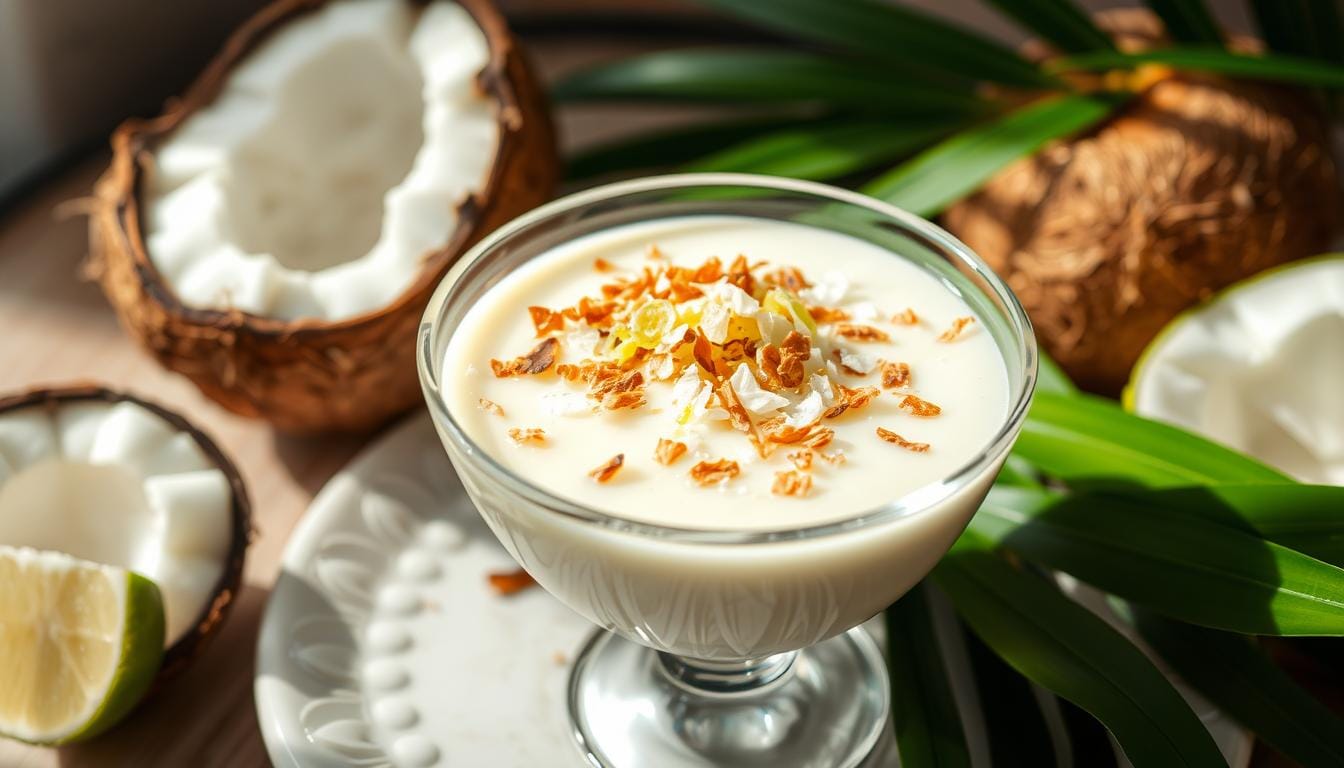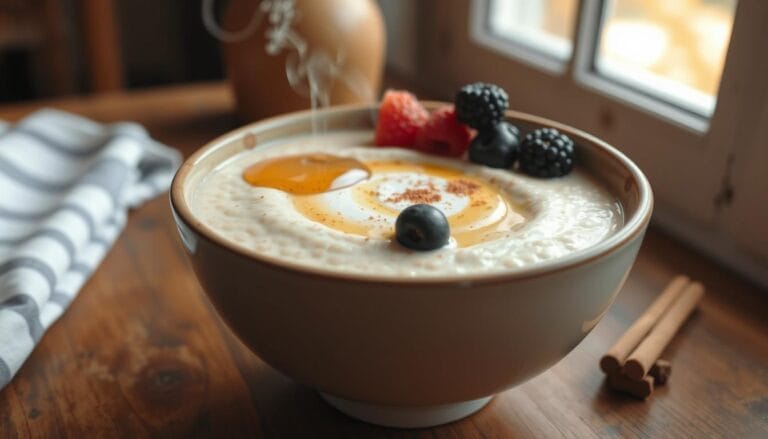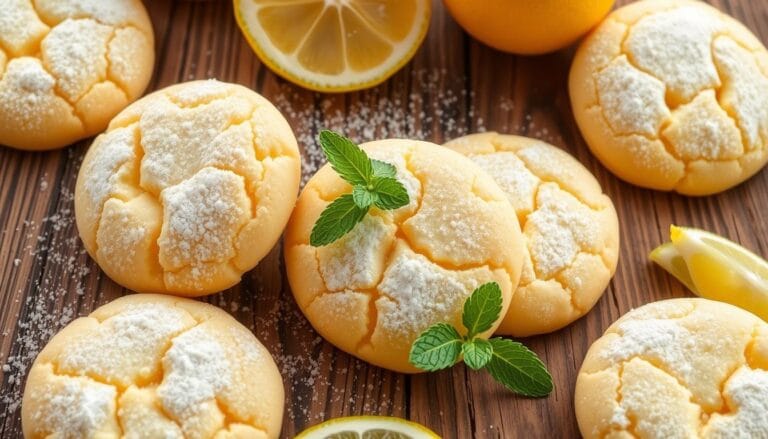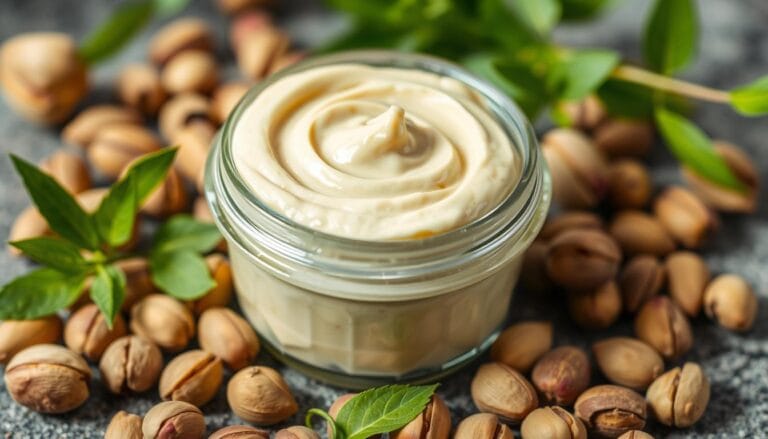Simple Coconut Custard Recipes for Beginners
As the sun sets, the air fills with the scent of tropical flowers. There’s nothing like enjoying a silky-smooth coconut custard. It’s a creamy dessert that takes you to a tropical paradise, right in your home.
In this guide, we’ll show you how to make simple, tasty coconut custard recipes. Even if you’re new to cooking, you can make these desserts. We’ll cover everything from the key ingredients to solving common problems, so you can become a pro at making coconut custard.
Table of Contents
Key Takeaways
- Discover the secrets to achieving the perfect creamy consistency in your homemade coconut custard.
- Learn about the different types of coconut products and how to choose the best ones for your recipes.
- Explore a variety of coconut custard variations, from classic baked to refreshing no-bake options.
- Uncover solutions to common custard problems, such as curdling and flavor imbalance.
- Discover delightful serving suggestions and garnishing ideas to elevate your coconut desserts.
Understanding the Basics of Coconut Custard
Making a smooth, creamy coconut pudding or coconut egg custard starts with knowing the key ingredients and techniques. At the heart of these desserts are a few essential elements. They work together to create the perfect consistency and flavor.
Essential Ingredients for Perfect Consistency
The foundation of any coconut custard is a few primary ingredients:
- Eggs – They provide structure and richness, making the custard custard-like.
- Coconut milk – It gives the custard its signature coconut flavor and creamy texture.
- Sweetener – The right amount of sugar, honey, or another natural sweetener adds sweetness.
Different Types of Coconut Products to Use
When making coconut custard, you can choose from various coconut products. Each has its own unique characteristics:
- Coconut cream – It’s thick and full-fat, making the custard rich and decadent.
- Coconut milk – Slightly thinner, it still offers a creamy, coconut-forward flavor.
- Coconut flakes or shredded coconut – They add a delightful textural contrast and extra coconut essence.
Kitchen Tools You’ll Need
To make your coconut custard perfectly, you’ll need these essential tools:
| Tool | Purpose |
|---|---|
| Whisk | Blending the ingredients and preventing lumps |
| Baking dish or ramekins | For baking the custard |
| Thermometer | Ensuring the custard reaches the proper temperature |
“The secret to a truly exceptional coconut custard lies in the careful balance of rich, creamy coconut and the silky-smooth texture of the custard.”
Benefits of Making Homemade Coconut Desserts
Making your own coconut delicacy or tropical custard at home has many perks. You get to choose every ingredient, so your desserts are free from bad stuff. Plus, you can make them just how you like them, for a truly special treat.
Homemade coconut desserts are better for you and save money too. Coconut is great for making all sorts of sweet treats, from classic custards to creamy no-bakes. Try using different coconut products like milk, cream, and shredded coconut to make your own delicious desserts.
| Benefit | Description |
|---|---|
| Ingredient Control | Avoid unwanted additives and preservatives by using fresh, high-quality ingredients. |
| Customization Options | Tailor the flavors and textures to your personal preferences. |
| Cost-Effectiveness | Homemade coconut desserts are often more budget-friendly than store-bought options. |
| Nutritional Benefits | Coconut is a rich source of healthy fats, fiber, and essential nutrients. |
Using coconut’s versatility and taste, you can make many tasty homemade desserts. They’re not only yummy but also healthier and cheaper than buying them. Enjoy making your own coconut delicacy or tropical custard and see the joy of homemade coconut treats.
Classic Baked Coconut Custard Recipe
Indulge in the rich and creamy delights of a classic baked coconut custard. This timeless dessert combines coconut’s tropical essence with the comforting texture of custard. It’s perfect for both seasoned bakers and kitchen novices, offering a coconut egg custard that’s sure to impress.
Temperature Control Tips
Getting the oven temperature right is key for a perfect baked coconut custard. Preheat to 325°F (165°C) and make sure it’s hot before putting in your custard dish. Avoid opening the oven door too often to prevent temperature changes that can ruin your coconut egg custard.
Testing for Doneness
Figuring out when your baked coconut custard is done can be tricky. But a simple jiggle test works well. Shake the dish gently; it should be set around the edges but still slightly wobbly in the middle. This means it’s ready to come out of the oven.
Cooling and Storage Guidelines
After baking, don’t rush to eat your baked coconut custard. Let it cool completely at room temperature, then refrigerate for at least 2 hours. This step helps it set fully and improves its creamy texture. Stored in an airtight container, your coconut egg custard can last up to 4 days in the fridge.
With these tips and the right technique, you’ll make a baked coconut custard that will wow your taste buds and guests. Enjoy the tropical flavors and luxurious texture of this classic coconut egg custard recipe.
No-Bake Tropical Custard Variations
Take your coconut pudding and tropical custard to the next level with these no-bake recipes. Say goodbye to the oven and explore chilled and stovetop methods. These showcase the rich flavors of coconut and tropical fruits.
Begin by making a smooth coconut pudding with full-fat coconut milk, vanilla, and a bit of sugar. Pour it into ramekins and top with fresh mango, pineapple, or passion fruit curd. This adds a vibrant, tropical touch.
For a creamier version, make a tropical custard on the stovetop. Simmer coconut milk, eggs, and sugar until it thickens. Then, mix in diced papaya, kiwi, or toasted macadamia nuts. Chill it and serve in parfait glasses for a stunning look.
| No-Bake Coconut Pudding | Tropical Custard |
|---|---|
|
|
For a special treat, layer the coconut pudding or tropical custard with toasted coconut flakes, crushed graham crackers, or chopped macadamia nuts. Chill it until you’re ready to serve. Your guests will love these delicious no-bake desserts.
“The beauty of no-bake coconut and tropical custards is that they allow the pure flavors of the ingredients to shine, without the fuss of turning on the oven.”
Troubleshooting Common Coconut Custard Problems
Making coconut custard can be fun, but sometimes it doesn’t turn out right. Don’t worry, we’ve got solutions for you! We’ll cover common issues and how to fix them, so your custard always comes out great.
Texture Issues and Solutions
Grainy or gritty texture is a common problem. It might be from cooking it too long or not mixing the coconut well. To get a smooth texture, cook it on low heat and stir constantly. For an even smoother custard, blend or strain it after cooking.
Preventing Curdling and Separation
Curdling is a big issue with coconut creme and coconut egg custard. It happens when eggs cook too fast or at too high a temperature. To avoid this, slowly add hot custard to eggs while whisking. Keep the cooking temperature low and avoid boiling the custard.
Fixing Flavor Balance
If your custard tastes too sweet or lacks coconut flavor, there’s a solution. Adjust the sugar, vanilla, or coconut extract to your liking. Adding a bit of salt can also balance the sweetness and bring out other flavors.
With these tips, you’ll make perfect coconut creme and coconut egg custard every time. Happy baking!
Thai-Inspired Coconut Creme Desserts
Step into the world of Thai-inspired coconut creme desserts. Here, thai coconut custard and coconut creme blend to create a flavor symphony. Discover the traditional sangkaya, a favorite Thai custard, and its modern twists that highlight coconut’s unique taste in Thai dishes.
The heart of these desserts is the mix of coconut milk, eggs, and sugar. The thai coconut custard is made with care, resulting in a smooth texture that’s a joy to eat. It’s perfect for cooling down and satisfying your sweet cravings.
Thai-inspired coconut creme desserts have grown, mixing vibrant ingredients and new techniques. Try adding tropical fruits like mango or pineapple for a fresh twist. Or, add aromatic ingredients like pandan leaves or Thai chili for a sweet and spicy mix.
“The essence of Thai desserts lies in the perfect harmony of flavors, where the creamy coconut creme and the subtle sweetness of thai coconut custard create a captivating experience for the palate.”
Whether you love Thai food or just desserts, exploring Thai-inspired coconut creme desserts is a treat. Enjoy the rich textures and flavors that take you to Thailand’s lively streets, one spoonful at a time.
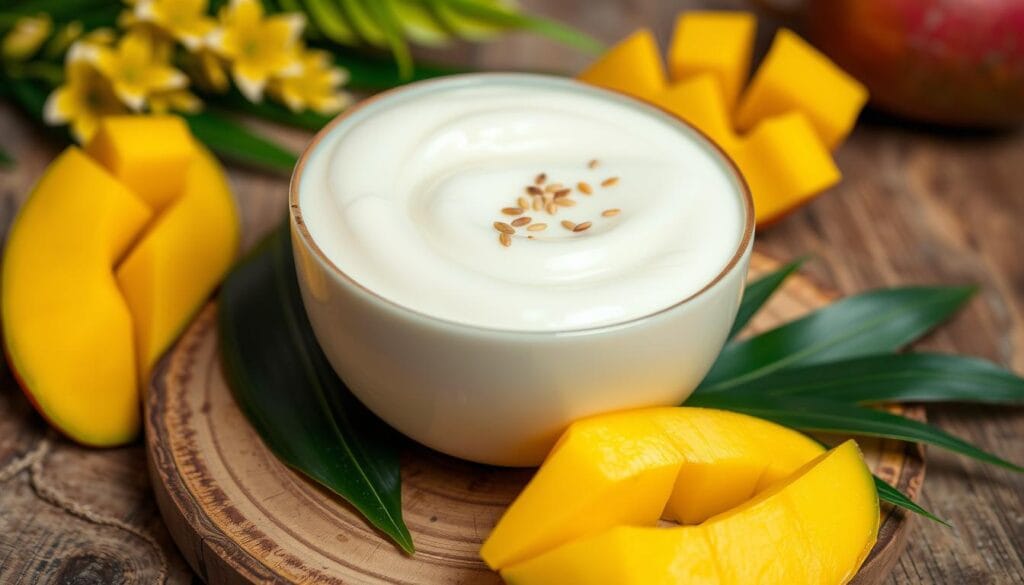
Dietary Modifications and Substitutions
Making coconut desserts is fun, but some changes are needed for dietary restrictions. You can find dairy-free, low-sugar, or egg-free options. These help you enjoy coconut delicacies while sticking to your diet.
Dairy-Free Options
Coconut milk or almond milk can replace dairy in recipes. They offer a creamy texture and taste. Coconut oil is great for richness instead of butter or heavy cream.
Sugar Alternatives
Lowering sugar intake doesn’t mean giving up sweetness in coconut desserts. Try honey, maple syrup, or dates for natural sweetness. Stevia or erythritol are good for less sugar.
Egg Replacements
For egg allergies or vegan diets, there are good substitutes. Silken tofu, aquafaba, or egg replacers work well. They help the custard bind without eggs.
Exploring these options lets you enjoy coconut desserts while meeting dietary needs. A bit of experimentation can make coconut delicacies for everyone to enjoy.
Serving Suggestions and Garnishing Ideas
Presenting your homemade coconut dessert or tropical custard is key. Whether it’s for one or a crowd, there are many ways to make it appealing. You can enhance both looks and taste.
For a stunning single serving, layer the custard in clear glasses or ramekins. Add a dollop of whipped cream, some toasted coconut flakes, and a mint leaf or candied ginger. This adds color and flavor.
- Place the custard in small bowls or cups for a fancy look.
- Drizzle caramel or chocolate sauce for extra richness.
- Pair the tropical custard with fresh tropical fruits like pineapple, mango, or kiwi for a refreshing touch.
For a family-style serving, pour the custard into a big baking dish. Top it with a coconut crumble or toasted shredded coconut. This makes a stunning presentation and adds a nice crunch.
| Serving Suggestion | Garnish Ideas |
|---|---|
| Individual Portions |
|
| Family-Style |
|
When presenting your coconut dessert or tropical custard, let the coconut flavor be the star. Add garnishes and textures that complement it. Try different styles to impress your guests.
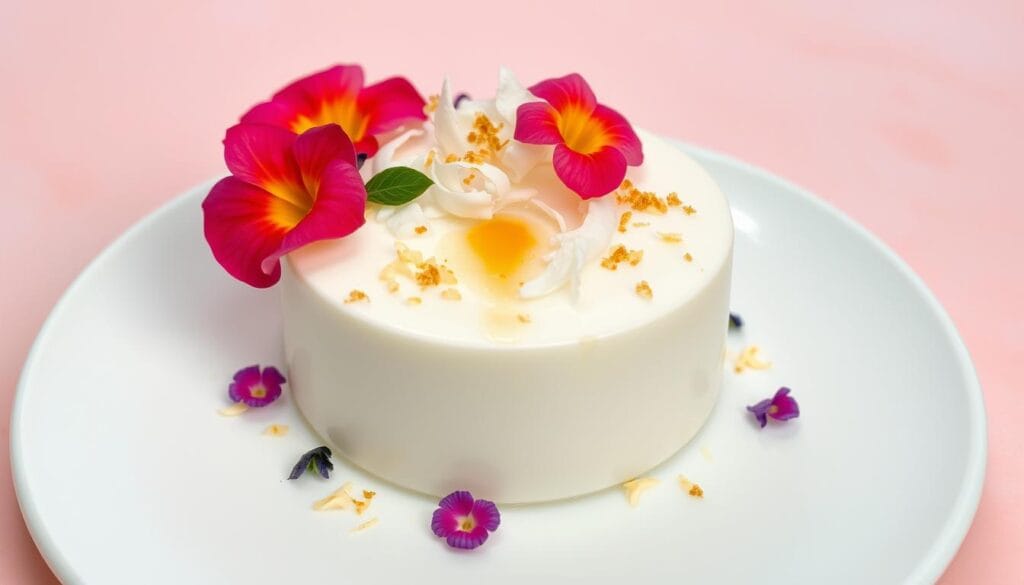
Conclusion
In this guide, you’ve learned how to make delicious coconut custard desserts. You now know the key ingredients and tools needed. You also know how to prepare these treats in different ways.
Whether you like the traditional baked custard or the no-bake versions, you have many options. These recipes take you on a tasty journey into the world of coconut desserts.
Get creative with coconut custard and show off your cooking skills. Try different coconut products and add unique flavors. Make these desserts your own and have fun with it.
Enjoy the smooth texture and amazing smell of your homemade coconut custard. It’s rewarding to make something so special. Share these treats with others or enjoy them by yourself. They bring joy and comfort, leaving a lasting memory.
Happy baking and happy tasting!
FAQ
What are the essential ingredients for making perfect coconut custard?
To make a creamy coconut custard, you need coconut milk, eggs, sugar, and vanilla extract. You can adjust these ingredients to get the texture and sweetness you like.
Can I use different types of coconut products in my custard recipe?
Yes, you can try different coconut products for unique flavors. Options include coconut cream, flakes, butter, or oil.
What kitchen tools do I need to make coconut custard?
You’ll need a whisk, a saucepan or double boiler, a baking dish or ramekins, and a thermometer. The thermometer helps ensure the custard cooks right.
What are the benefits of making homemade coconut desserts?
Making coconut desserts at home lets you choose the ingredients and flavors. It’s also cost-effective and nutritious. Coconut is good for you too.
How do I ensure my baked coconut custard turns out perfectly?
For perfect baked custard, keep the oven temperature steady. Watch it closely and test for doneness by shaking the dish. Let it cool completely for the best texture.
Can I make coconut custard without baking it?
Yes, you can make no-bake custard. Use the stovetop or a chilled method. These recipes might use gelatin or cornstarch for setting.
How can I troubleshoot common issues with coconut custard?
For grainy or curdled custard, adjust the cooking temperature or add ingredients slowly. Try a different thickener if needed. Balance the flavors well to avoid problems.
What are some traditional Thai-inspired coconut desserts?
Thai desserts often use coconut cream, palm sugar, and herbs or spices. Sangkaya, a steamed custard, and coconut puddings are classics.
Can I make dairy-free or low-sugar versions of coconut custard?
Yes, you can make custard that’s dairy-free or low-sugar. Use non-dairy milks, plant-based sweeteners, and egg substitutes for vegan options.
How can I serve and garnish coconut custard?
Serve coconut custard in individual portions or as a family dessert. Top it with fruits, toasted coconut, caramel, or chocolate. Pair it with mango or pineapple for extra flavor.

